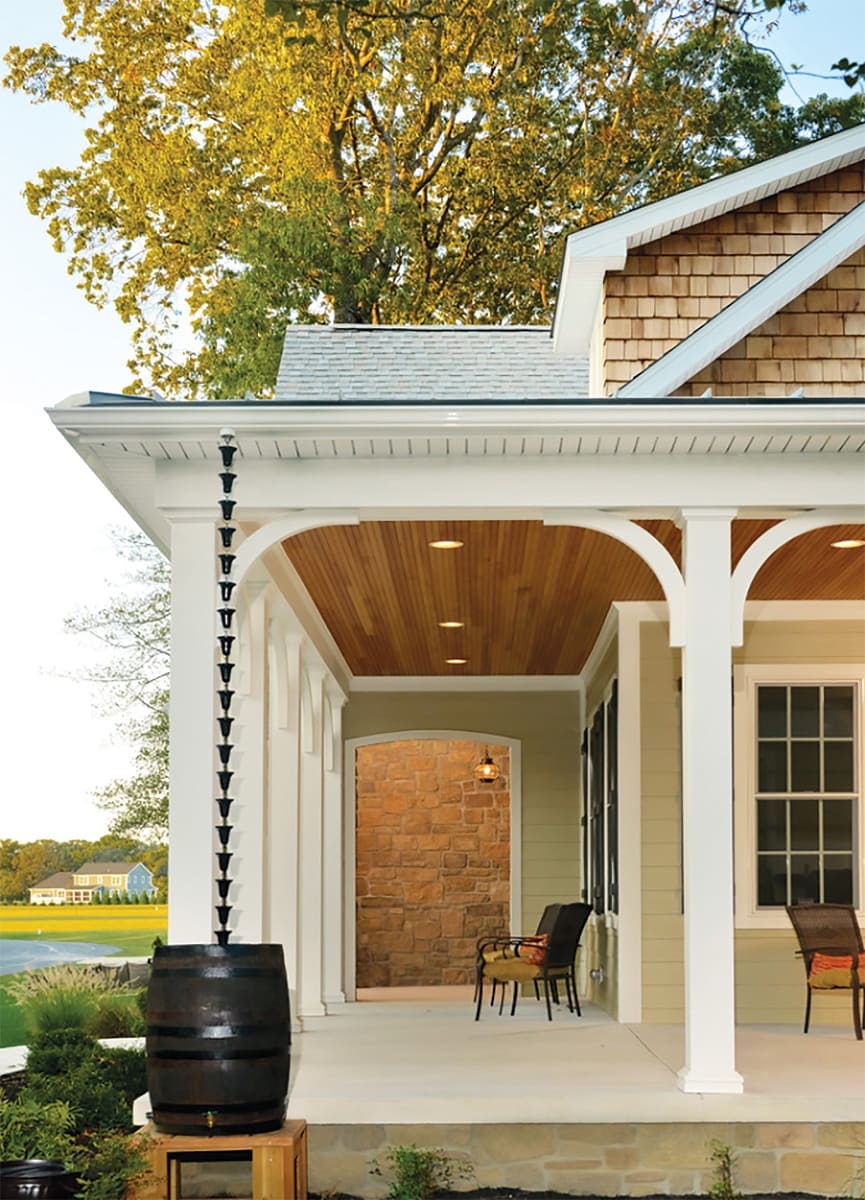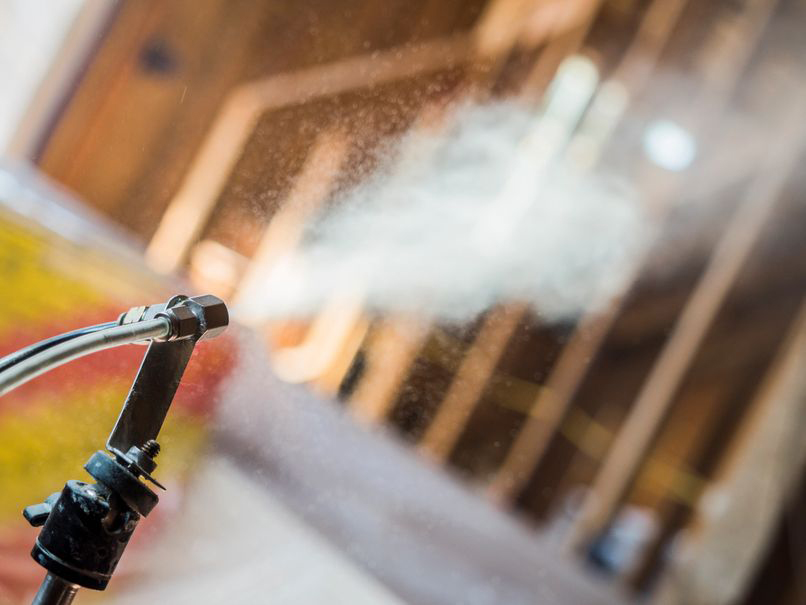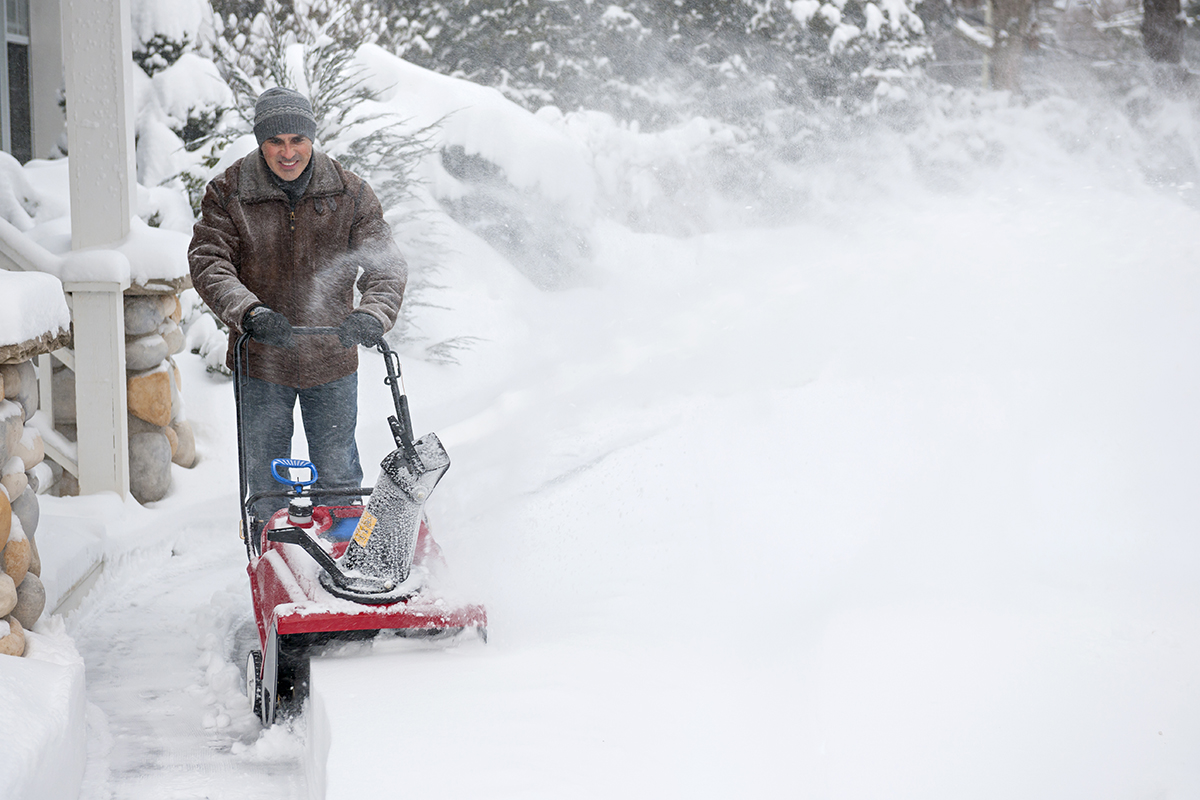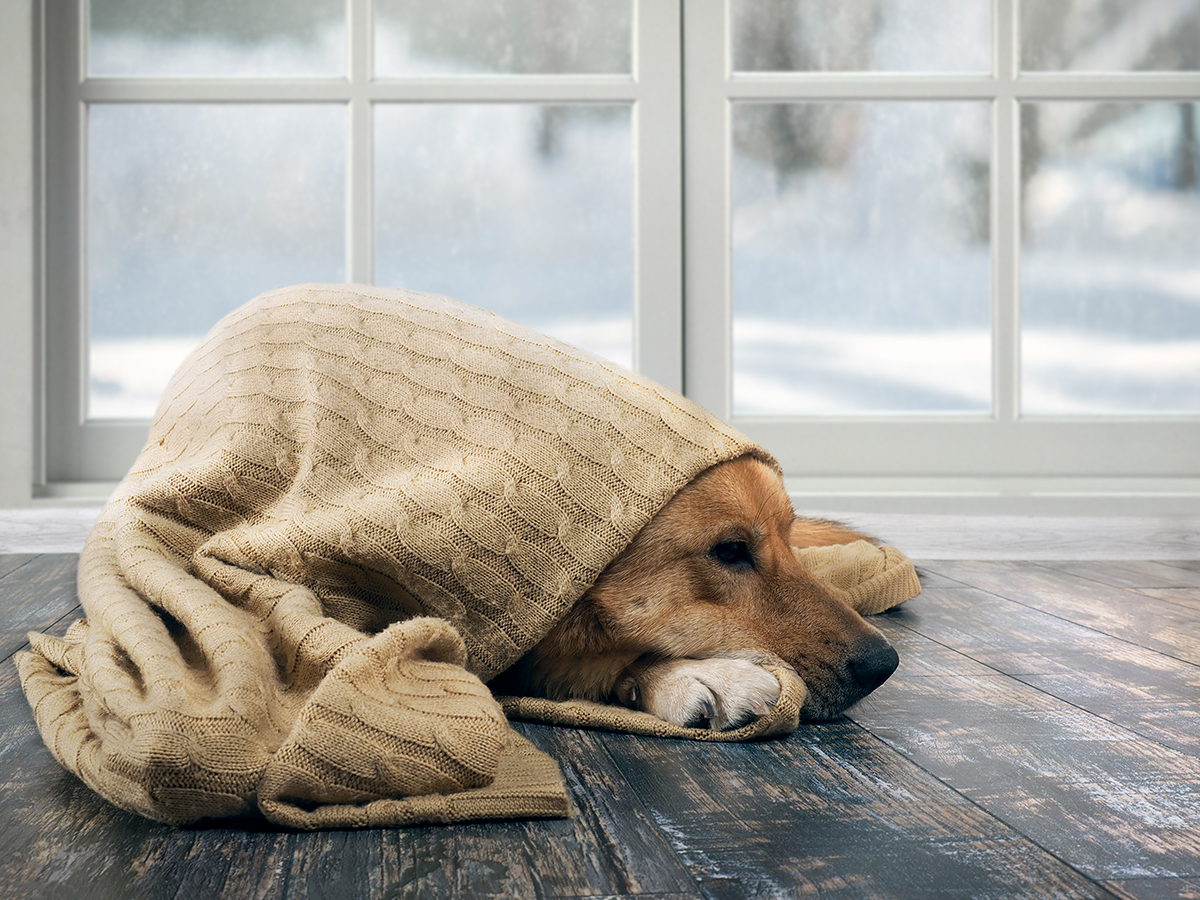WRITER | MEGAN WESTERS
Best Practices for Redirecting Rainwater
For those of us who have lived in Michigan for years, we know that the weather, no matter what time of year it is, is unpredictable, and fall is no exception.
Joshua Robinson, design and sales manager at Todd’s Services, a landscaping and drainage company based in Southeast Michigan, talked with us on the topic of water redirection. While everyone has different ideas of what to use, we can all agree that no matter what time of year it is, it’s important to have a water drainage plan in place.
Traditional
Many people opt to use traditional downspouts to channel water from the roof to the ground. With downspouts, you connect an elbow at the bottom of the downspout to an extension, directing the water to flow on a horizontal slope to drain into the ground. While it can be effective, Robinson said this option can cause issues.
“All the rain that lands on a home’s roof is dumped in a few locations, and it can cause havoc on basements, landscaping, lawns, driveways, patios, and walkways,” said Robinson.
He recommends either using long piping to redirect water to a safe and nondestructive area or considering the following two options.
Covert
Moving this idea underground is not only good for the aesthetics of the house, it can be a better option for your property. Instead of having an extension run from the downspout out onto the ground, connect the downspout to an underground pipe that will carry the water away from the house or to a dry well, which is essentially an underground storage tank that slowly disperses water into the soil.
“The goal of a dry well is to get this water down into the water table quickly rather than waiting for the water to do that from the surface,” said Robinson, noting that dry wells vary greatly in size. “Dry wells are popular options when burying sump pump lines because this water often has brine (salt) which can kill grass if released at the surface.”
Stylish and Economical
In states like California, Arizona, and Colorado, conserving water is vital. There, many use a system where chains, essentially funnel systems, are connected to a hole in the gutter where the downspout would normally be. Through the chain, the water is directed down to a barrel that collects rainwater.
“Rain chains and water barrels are great and are growing in popularity – mildly in Michigan because of the fortunate fact of copious amounts of water in this state. They are a great way to utilize rainwater for numerous things,” said Robinson, but he warned to still prepare for overflow of the water barrel.
“A 4-inch pipe in the same manner as prescribed for downspouts is what I would refer for this,” he said.
Placing rain chains with corresponding water barrels every few feet along the perimeter of your home can allow heavy rains to disperse more evenly. Some even come with tops that allow water to flow in, but not things like leaves or bird feces. This allows you to reuse water from the barrel without having to strain or purify it.
Choosing a good way to route water from your roof to the ground is something every homeowner should do. Whether it’s DIY or hiring a professional, it’s always good to know your options, from traditional to stylish and everywhere in between.








